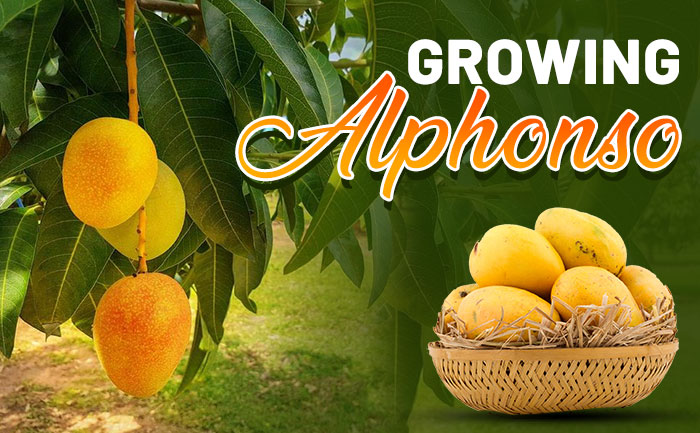
Alphonso Mangoes: How long mango tree takes to bear fruits
India is known to be the place of mangoes. Many mango lovers wait for summers only to hop on to the farm fresh mangoes. These attractive, aromatic, and pulpy fruits have great demand in the market. Mangoes in India are hailed as the undisputed King of fruits and they deserve their status because of their nutritional qualities. Scientists have tagged mangoes under the superfood category because of all the health benefits it is associated with. Langda, Kesar, Chaunsa, Totapuri, Rajapuri, Badam are the most popular varieties. Alphonso aka Hapus has the highest demand in local as well as International markets for its extra sweetness and aroma. A true mango lover can’t miss out on knowing interesting details about these super fruits. Here’s everything you need to know about how long Alphonso mangoes take to grow.
How much time Alphonso (Hapus) mango tree takes to bear fruits?
Alphonso mangoes generally require warm climate conditions to grow healthy. The temperature should not drop below 4 degree Celsius at places wherein mango trees are planted. Newly germinated mango plants require bright but indirect sunlight. After the tree turns 3-4 years old, they grow on its own. They need to be planted on the ground which has enough water supply and direct sun rays. A young Alphonso mango tree requires good amount of natural sunlight i.e. at least six hours of sun per day. Mango trees completely bloom no earlier than 5–6 years from the time of planting. Mango trees generally start growing fruits within three years. However, the tree might bear only handful of fruits during the initial years. Only after 5-6 years of its exitances, the mango tree starts bearing more and more fruits.
Must Read: What’s The Difference Between Devgad And Ratnagiri Alphonso Mangoes
How to plant an Hapus Mango tree?
- First off all take a completely ripened Alphonso mango and it cut down. Don’t damage the seed, while talking out pulp
- Wash the seed nicely with water and then keep it under sun to dry
- After allowing the seed to dry for a few days, take a sharp knife and cut the seed carefully from edges
- Open the seed cover with the sharp blade/knife. Do not damage the inside part of the mango seed
- Remove the seed and throw the upper husk away
- The inside part of the seed is of kidney-shape, having whitish green appearance
- Now take a planting container and fill it with healthy soil. Make enough holes on the container which can pass out the excessive water in the container
- Once you add enough amount of soil for planting, take the mango seed and place it in the middle. Make little hole in the soil and place the seed inside that hole. Place the mango seed in such a way, wherein eye part has an upward facing
- Now take a pinch or two turmeric powder and spray it near the seed. This helps the seed germinate faster and keeps it healthy
- Now take little soil in your hands and spray them on the seed. Try to loosely cover the seed with little bit of soil in container.
- Keep this plant container where sun rays reaches everyday. Keep watering the container daily. During initial days you need to spray little amount of water. Excessive water can spoil the germinating seed inside soil. Consider taking medium temperature water.
- The seed should be germinated within a few weeks of span
- Nurture the plant and protect it from any type of external damage
- Once this plant turns 2-3 year-old, you can shift it to outdoor location that have enough space, water supply and sun rays
- Water the plant daily and wait for few years. It will bear fruits during summers
